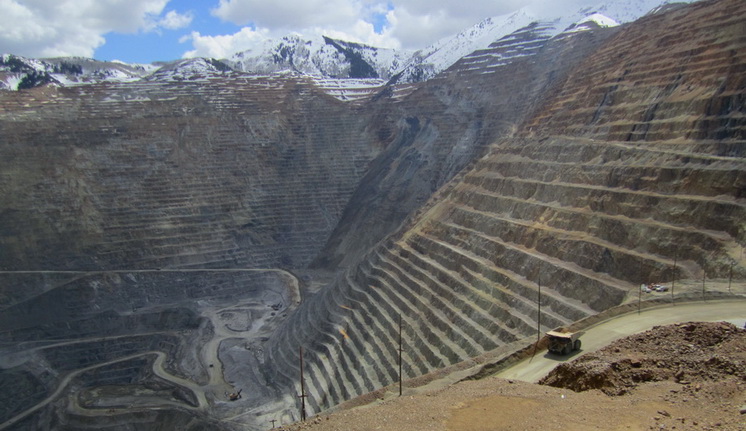The Utah Bingham Colossus – the biggest surface copper mine in the world – Part Two

Modernization
In the middle of the 80s of the last century, due to several factors, such as the decrease in copper prices, increase in manpower costs, the decrease in copper content in the ore, the mine was at the edge of its viability. A modernization programme was prepared and implemented in order to bring the mine back to life and make it an effective one, such as is known today. 400 million dollars was invested into the project. The pulverizing of the mined ore was moved straight into the mine. New grinding and flotation devices were built close to the mine. The transport and other necessary machinery were modernized. Today, there is also one of the most modern copper works in the world which captures more than ninety nine percent of released carbon dioxide.
2013 landslide
In April 2013 the mine was struck by an unfortunate event – a massive landslide. Two individual rock avalanches happened at night at the northeastern side. They buried two thirds of the mine base. The overall cubic content was sixty five million cubic metres. Because the mine is located in an area with a dense net of regional seismometers and infrasound sensors, the signals of instability had been captured since the beginning of the year. Geo-technicians had cleared out the area a month before the event because of the possible danger. The landslide thus became one of the best monitored landslides in history. The rock avalanches had the average speed of 31.3 m/s. The highest achieved speed according to experts, was 44.7 m/s at least.
The time of each landslide was extremely quick – only ninety seconds in the timespan of an hour and a half. During the following six days after the landslide, another sixteen seismic events – small earthquakes, were detected in the area. This is the first known landslide that started off an earthquake. Originally, it was supposed that the rock avalanches were caused by earthquakes, but the registries proved that it was the other way round. This event was not responsible for any victims or injuries. But a part of the communication network was destroyed, and some of the machines were buried (three out of thirteen shovel excavators, fourteen out of a hundred trucks, and several bulldozers and graders). As a consequence, the production was lowered by fifty percent and a hundred employees were laid off. The caused damage was as high as one billion dollars which makes this landslide the biggest and most expensive in American history. The big rock avalanches, according to statistics, always had human victims. This did not happen in Bingham mine thanks to the monitoring system and early warning.
The owner
The copper mine has only one owner which is the company Kennecott Utah Copper Corporation which is a one hundred percent subsidiary company of the British-Australian multinational metal and mining company Rio Tinto Group created in 1873. Its subsidiary companies are owners or partial owners of the diamond mine Argyle in Australia or the diamond mine Diavik in Canada. We wrote about them in issue 3/2012.
The mine was designated as a National Historic Landmark of United States of America in 1966. There is a centre for tourists in the area of the mine. And if the visitors want, they can attend a two hour tour through the mine.
Source: Lomy a těžba
